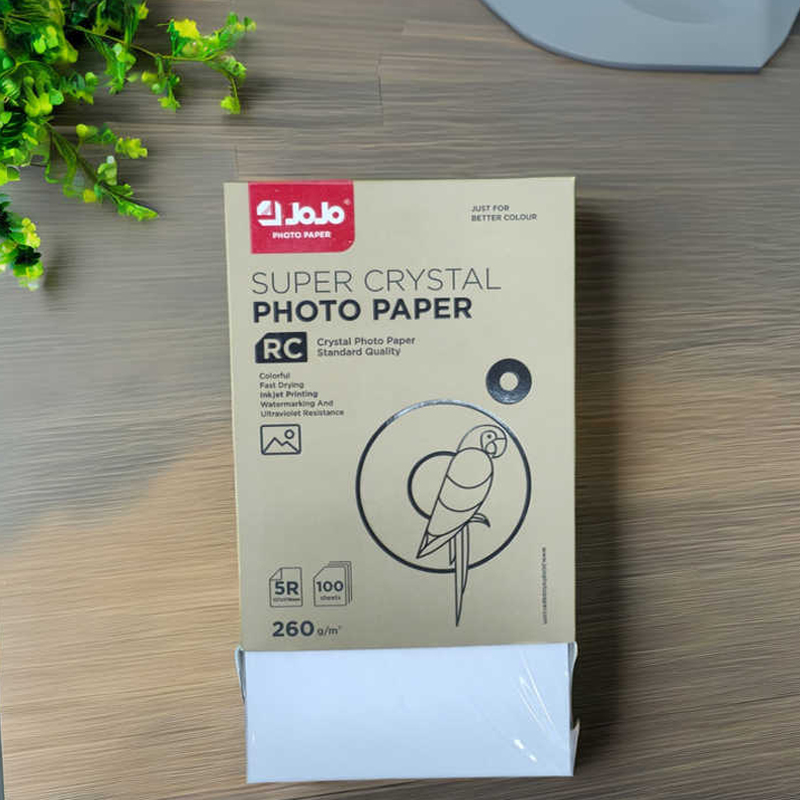If you need any help, please feel free to contact us
Why Paper Quality Affects Image Clarity
To achieve consistently sharp, professionally printed images, it takes more than just a powerful printer and high-resolution source files. The inkjet photo paper you choose is critical to whether details, gradients, and text retain their intended clarity. For users of Jojo Photo Paper, understanding how paper characteristics affect clarity is essential to maintaining good print results over time.

The Role of Coating and Surface Texture
One of the primary factors influencing image definition is the specialized coating applied to inkjet photo paper. This coating regulates how ink droplets interact with the paper’s surface. When coatings are engineered to control absorption precisely, they help prevent excessive spreading that can blur delicate lines or reduce the distinction between color areas.
Jojo Photo Paper, for instance, utilizes a micro-porous or resin-coated layer designed to hold ink droplets in place while promoting uniform drying. This level of control supports the preservation of sharp edges and subtle tonal transitions, particularly in photographs containing high-contrast details or intricate patterns.
Surface texture also plays an important role. Smooth paper surfaces can reflect light evenly, which often enhances the perception of crispness. By contrast, textured papers may scatter light and subtly soften the appearance of printed content, which can be desirable for certain artistic applications but less suitable when maximum clarity is a priority.
The Importance of Weight and Dimensional Stability
Paper weight and rigidity may seem secondary compared to coating, but they have measurable effects on how well an image maintains its sharpness during handling or long-term storage. Thin or lightweight papers are more prone to curling, particularly if they absorb significant moisture from ink. Any surface deformation, even minor, can disrupt consistent focus or cause distortion along fine edges.
In response to these challenges, Jojo Photo Paper is produced in a variety of weights to accommodate different print requirements. Heavier stock tends to resist warping and provides a more stable base that supports precise ink absorption. This stability helps ensure that prints remain flat whether they are displayed, framed, or archived.
Ink Absorption Rates and Drying Behavior
The rate at which paper absorbs ink has practical consequences both for production workflows and the clarity of printed images. Papers that absorb ink too slowly create a greater chance of smudging or unintentional mixing between adjacent colors. Conversely, papers that absorb ink more rapidly can help preserve the fine detail of lines and shading.
Fast-drying characteristics of Jojo Photo Paper contribute to maintaining separation between color areas. In busy production environments, this property also supports more efficient handling and reduces the waiting period before prints can be laminated, trimmed, or packaged. By shortening this interval, operators can process work with less risk of surface damage or fingerprint marks.
Compatibility Considerations with Different Printers and Inks
Another dimension to consider is how well a given paper performs with a variety of printers and ink types. Some papers are optimized primarily for dye-based inks, while others are more suitable for pigment-based formulations. Using a paper and ink combination that lacks compatibility can produce uneven coverage or less distinct print results.
Jojo Photo Paper is designed to work with widely used water-based dye inks from manufacturers such as Epson, Canon, and HP. This versatility allows print shops to maintain predictable performance without extensive recalibration. Even so, confirming printer settings and testing small sample runs remains a practical step when seeking to achieve consistent image sharpness across different devices.
Environmental Factors Affecting Image Clarity
Beyond printer compatibility, environmental conditions also have a measurable impact on how paper preserves detail over time. High humidity can alter surface characteristics, leading to gradual softening of edges. Prolonged exposure to direct sunlight can accelerate fading, diminishing contrast and definition.
To protect image clarity, it is recommended to store finished prints in a controlled environment and, where appropriate, use protective covers or frames. While Jojo Photo Paper incorporates coatings that can reduce the impact of moisture and ultraviolet light, these additional precautions help maintain quality over extended periods.
Practical Recommendations for Paper Selection
Selecting the right inkjet photo paper should involve evaluating the intended purpose of the prints, the level of sharpness required, and the anticipated handling conditions. For photographs or marketing materials that demand precise detail, smooth, heavier-weight papers are often preferred. For more routine internal documents, lighter stocks may still provide satisfactory sharpness without additional cost.
Testing representative samples and reviewing the manufacturer’s technical data can help confirm that a chosen paper meets expectations. In addition, keeping records of which papers perform best with particular inks and printers can streamline future decision-making and reduce the need for repeated adjustments.
Paper quality has a significant impact on the clarity of printed images and how well they hold up over time. From coating formulation and surface smoothness to drying speed and dimensional stability, each characteristic affects overall performance. By taking the time to understand and evaluate these variables, businesses and individuals can select inkjet photo papers that meet their specific needs and support consistent, high-quality output.

 English
English Español
Español 中文简体
中文简体 Português
Português

